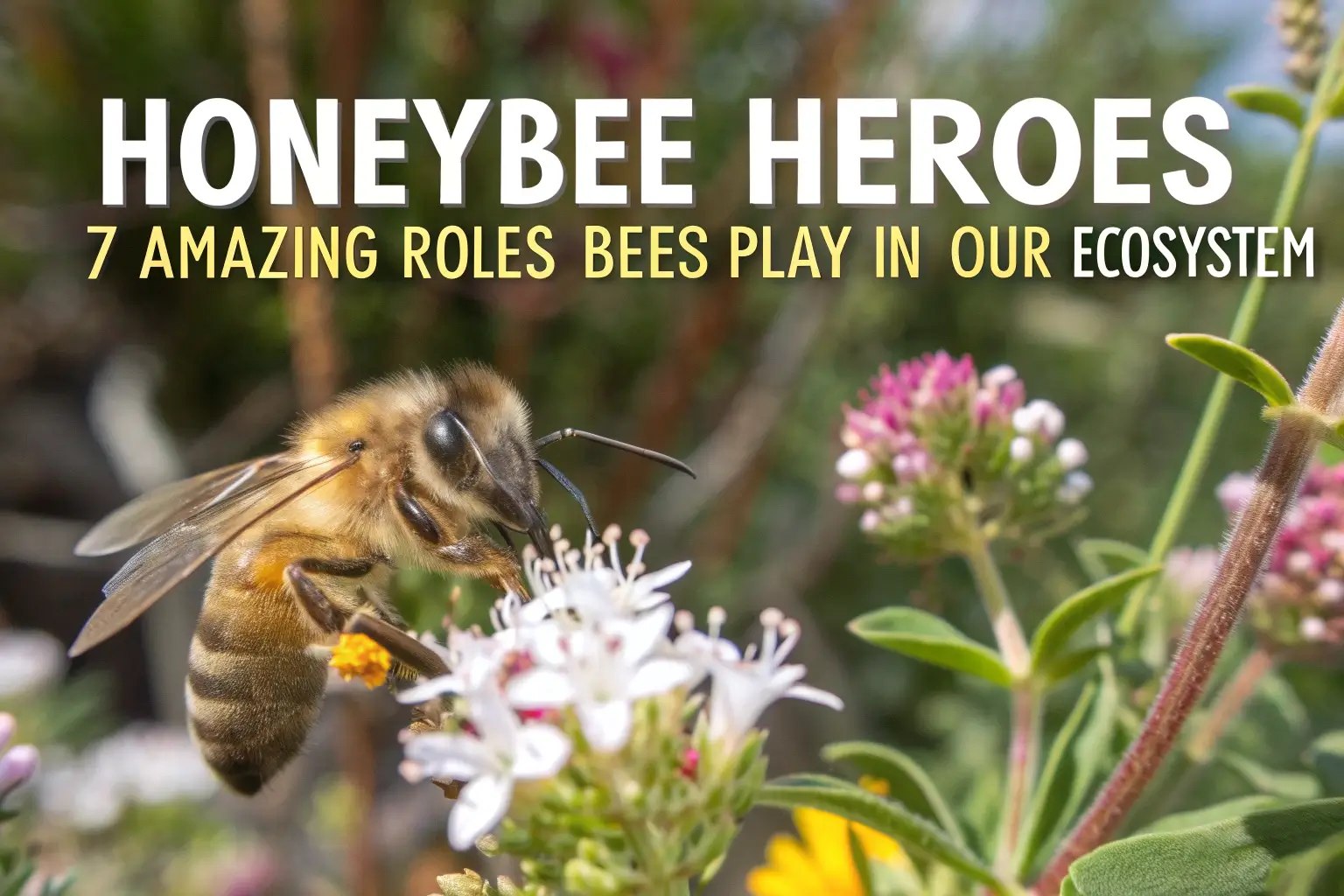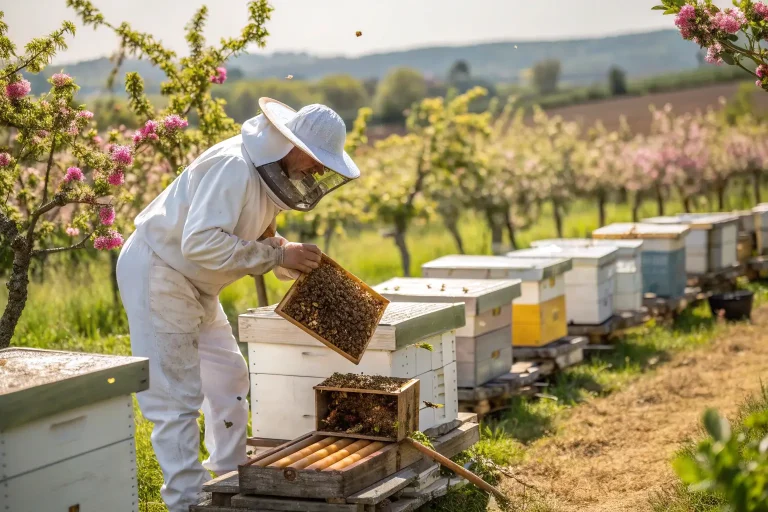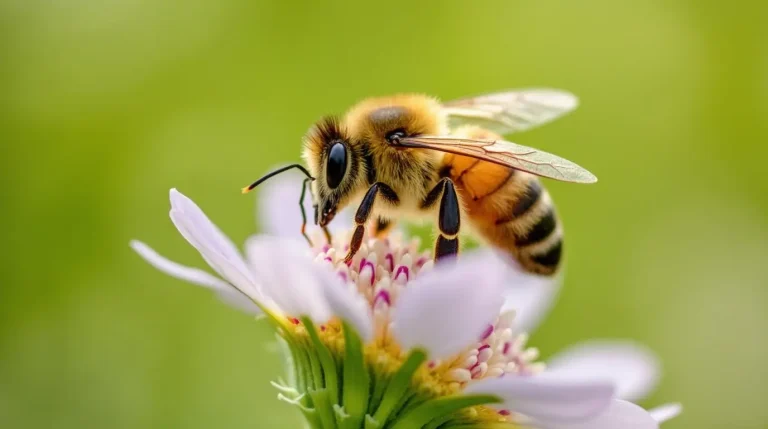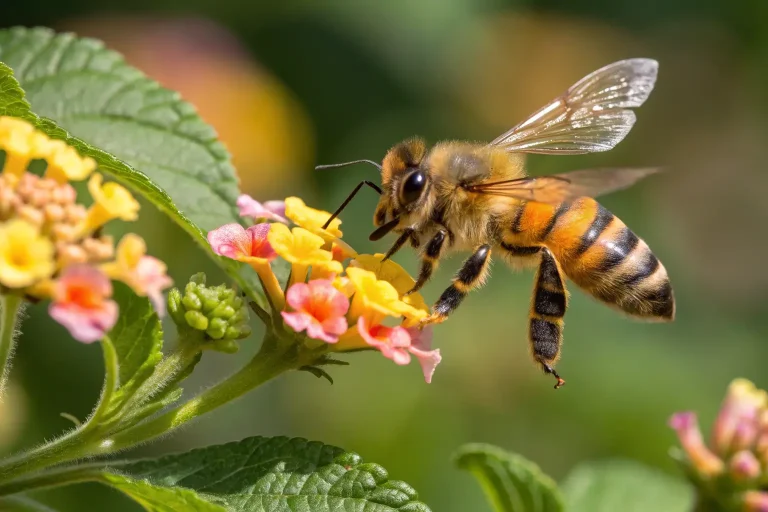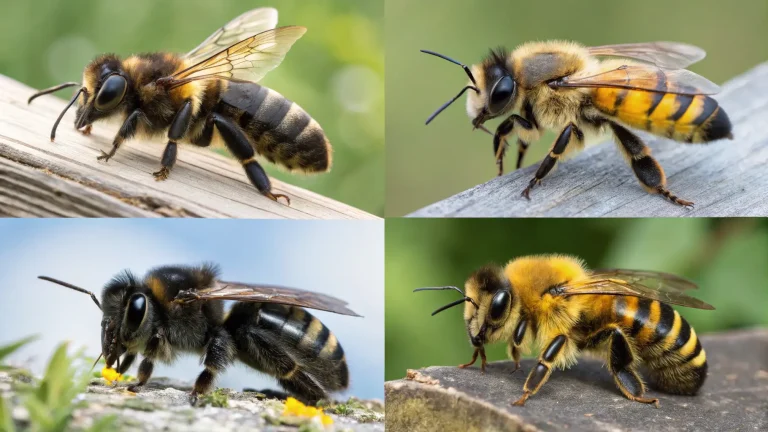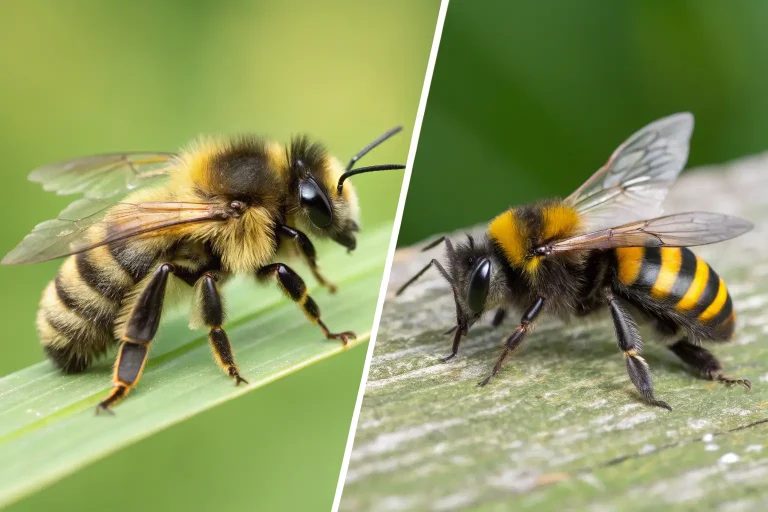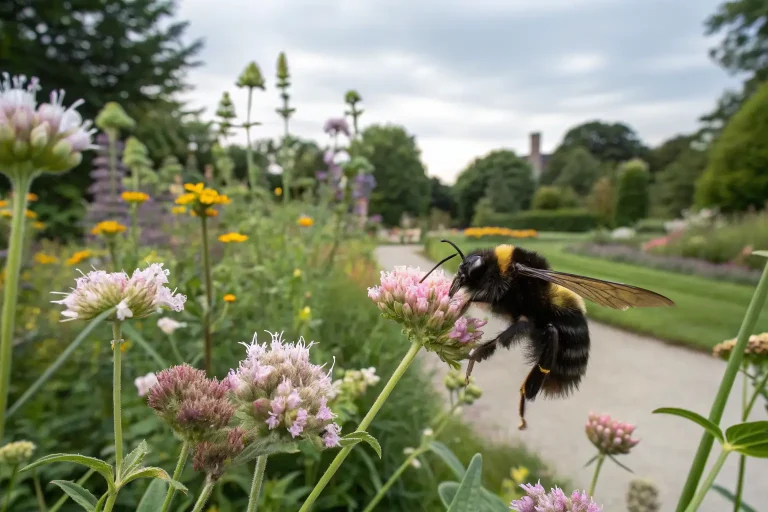Honeybee Heroes: 7 Amazing Roles Bees Play in Our Ecosystem
Buzzing between flowers with precision and purpose, honeybees and bumblebees are nature’s unsung champions, quietly maintaining the balance of our world’s ecosystems. These tiny creatures might seem insignificant at first glance, but they’re responsible for pollinating about one-third of the food we consume daily. From ensuring food security to supporting biodiversity, these remarkable insects deserve our attention and protection more than ever before.
Introduction
The gentle hum of a honeybee’s wings as it moves methodically from flower to flower is one of nature’s most reassuring sounds. These small but mighty creatures—particularly honeybees and bumblebees—have been essential partners in Earth’s ecosystems for millions of years. Their relationship with flowering plants has evolved into one of the most successful symbiotic relationships on our planet.
Understanding the critical roles these pollinators play goes far beyond appreciating honey production. As honeybee populations face unprecedented threats worldwide, learning about their ecological importance becomes increasingly urgent. Their survival is inextricably linked to our own food security and environmental health.
Did you know that a single honeybee worker will visit approximately 5,000 flowers in a single day? Even more impressive, to produce just one pound of honey, honeybees must collectively fly over 55,000 miles—equivalent to circling the Earth twice!
Species Overview
Scientific Name
Honeybees belong to the genus Apis, with the Western honeybee (Apis mellifera) being the most commonly managed species worldwide. Bumblebees, their fuzzy cousins, belong to the genus Bombus, with over 250 species identified globally.
Physical Characteristics
Honeybees are relatively small insects, measuring between 12-15mm in length, with distinctive amber and black striped abdomens. Their bodies are covered in branched hairs that efficiently collect pollen. Honeybees possess specialized structures including pollen baskets on their hind legs for transporting pollen back to the hive.
Bumblebees are larger and rounder than honeybees, measuring 15-25mm in length. Their bodies are densely covered with fuzzy hair, giving them their characteristic “bumbling” appearance. Most species display black bodies with varying patterns of yellow, white, or orange bands.
Subspecies
The Western honeybee (Apis mellifera) has over 20 recognized subspecies adapted to different geographic regions, including:
- Apis mellifera ligustica (Italian honeybee): Favored by beekeepers for its gentle temperament
- Apis mellifera carnica (Carniolan honeybee): Known for excellent honey production
- Apis mellifera scutellata (African honeybee): More defensive and highly adaptive
Bumblebees also display remarkable diversity, with common species including the buff-tailed bumblebee (Bombus terrestris) in Europe and the common eastern bumblebee (Bombus impatiens) in North America.
Habitat and Distribution
Natural Habitat
Honeybees originally evolved in tropical and subtropical regions but have adapted to thrive in diverse environments across every continent except Antarctica. In the wild, honeybee colonies typically establish nests in hollow trees, rock crevices, or other protected cavities. Their adaptability has made them successful in urban, agricultural, and natural landscapes alike.
Bumblebees prefer temperate regions and can be found from lowlands to mountain habitats. Unlike honeybees, most bumblebee species nest underground, often repurposing abandoned rodent burrows or building nests under piles of plant matter.
Geographic Range
Thanks to both natural spread and human introduction for agricultural purposes, honeybees now have a nearly global distribution. Wild and managed honeybee populations exist across North and South America, Europe, Asia, Australia, and parts of Africa.
Bumblebees are primarily found in the Northern Hemisphere, with the greatest diversity in temperate regions of North America and Eurasia. Some species have been introduced to New Zealand and Tasmania for agricultural pollination.
Adaptations
Both honeybees and bumblebees have evolved remarkable adaptations that enable them to function as superior pollinators:
- Thermoregulation: Bumblebees can generate body heat through muscle contractions, allowing them to forage in cooler temperatures than honeybees. Honeybees cluster together in winter to maintain hive temperature.
- Specialized mouthparts: Their proboscis (tongue) can extend to reach nectar deep within flowers.
- UV vision: Bees can see ultraviolet patterns on flowers invisible to human eyes, guiding them to nectar sources.
- Electrostatic charge: Their bodies develop a positive electrostatic charge during flight, causing pollen to literally jump from negatively charged flowers onto their bodies.
Diet and Feeding Habits
What They Eat
Honeybees and bumblebees subsist almost entirely on plant products, specifically:
- Nectar: The primary energy source, collected from flowers and converted into honey through enzymatic action and dehydration
- Pollen: Provides essential proteins, fats, vitamins, and minerals; particularly important for larval development
- Propolis: Plant resins collected and used to seal hive gaps and as an antimicrobial agent
- Honeydew: In some regions, bees collect the sweet excretions of aphids and scale insects when flower nectar is scarce
Foraging Behavior
Honeybees and bumblebees are renowned for their sophisticated foraging strategies:
Honeybees employ a remarkable recruitment system using the “waggle dance,” through which successful foragers communicate the distance, direction, and quality of food sources to hive mates. They typically forage within 2-3 miles of their hive but can travel up to 6 miles when necessary.
Bumblebees are more independent foragers, relying less on communication and more on individual exploration. They tend to forage closer to their nests, generally within a 1-mile radius. Their larger size and ability to fly in cooler temperatures allows them to access flowers that honeybees cannot.
Dietary Needs
A single honeybee colony requires approximately 120 pounds of nectar and 20-30 pounds of pollen annually. Interestingly, both honeybees and bumblebees show significant “flower fidelity,” often focusing on one plant species per foraging trip. This behavior makes them particularly efficient pollinators—far more effective than wind or other insects.
During winter months, honeybees survive on stored honey reserves, while most bumblebee colonies die off with only fertilized queens surviving to establish new colonies in spring.
Behavior and Social Structure
Social Behavior
Honeybees represent one of nature’s most complex social structures, living in highly organized colonies of 20,000-80,000 individuals. These colonies operate as superorganisms where individual bees function as parts of a collective whole.
The honeybee colony contains three distinct castes:
- Queen: The single reproductive female who may lay up to 2,000 eggs daily
- Workers: Sterile females who perform all colony tasks from nursing brood to foraging
- Drones: Males whose primary purpose is mating with queens from other colonies
Bumblebee societies are less complex but still highly social, with colonies typically comprising 50-400 individuals organized into similar castes.
Communication
Honeybees have developed sophisticated communication systems:
- The waggle dance communicates distance and direction to food sources
- Pheromones regulate colony behavior and cohesion
- Vibration signals coordinate group activities and alert to threats
- Food exchange shares information about nectar quality
Bumblebees rely more heavily on pheromone signals and direct physical interaction, with less elaborate communication systems than honeybees.
Mating and Reproduction
Honeybee reproduction involves remarkable behaviors:
- New queens are raised in special vertical cells and fed royal jelly exclusively
- Virgin queens embark on mating flights, mating with 12-20 drones mid-air
- Successful drones die after mating
- The fertilized queen returns to establish her colony, storing sperm for her lifetime (3-5 years)
- Colony reproduction occurs through swarming, when the existing queen leaves with workers to establish a new colony
Bumblebee reproduction follows a different annual cycle:
- Fertilized queens hibernate through winter
- Each queen establishes a new nest in spring, raising the first worker brood herself
- The colony grows throughout summer
- In late summer, new queens and males are produced
- New queens mate, then hibernate, while the rest of the colony perishes in winter
Conservation Status
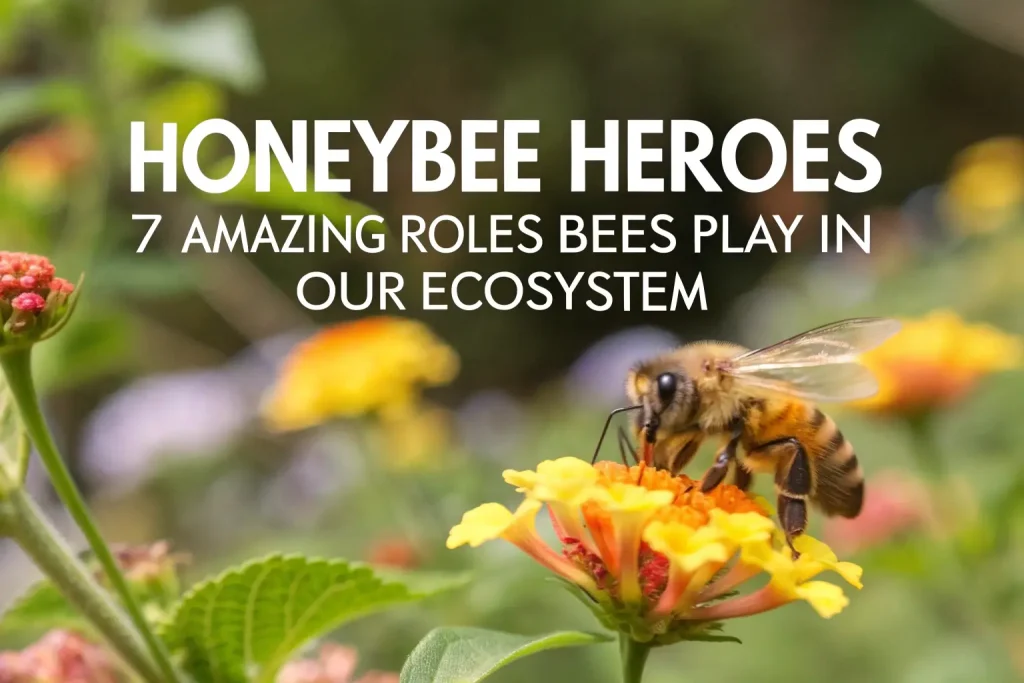
Endangerment Level
While neither honeybees nor bumblebees as entire genera are listed as endangered, numerous honeybee populations are experiencing alarming declines, and several bumblebee species are critically endangered according to the IUCN Red List.
The rusty-patched bumblebee (Bombus affinis), once common across North America, has declined by nearly 90% and became the first bee species in the continental United States to be listed as endangered in 2017.
Threats
Both honeybees and bumblebees face numerous threats:
- Pesticides: Neonicotinoids and other agricultural chemicals impair bee navigation, learning, and reproduction
- Habitat loss: Urbanization and monocrop agriculture reduce forage diversity and nesting sites
- Parasites and diseases: Varroa mites, nosema fungi, and bacterial diseases like American foulbrood devastate colonies
- Climate change: Shifting weather patterns disrupt the synchronized timing of bee emergence and flower blooming
- Colony Collapse Disorder: A phenomenon where worker bees abruptly disappear, leaving queens and immature bees behind
Conservation Efforts
Multiple initiatives aim to protect these essential pollinators:
- Pollinator corridors: Creating connected habitats of flowering plants along roadsides and utility rights-of-way
- Urban beekeeping: Supporting managed honeybee colonies in cities worldwide
- Pesticide regulations: Restricting neonicotinoid use in the European Union and elsewhere
- Native plantings: Encouraging homeowners to plant pollinator-friendly gardens
- Citizen science: Engaging the public in monitoring wild bee populations
- Research funding: Supporting scientific studies on bee health and disease resistance
Interesting Facts
- A honeybee’s wings beat approximately 200 times per second, creating their distinctive buzz.
- Honeybees maintain their hive at a precise temperature of 93-95°F year-round, regardless of outside conditions.
- The queen honeybee can lay her own weight in eggs daily—up to 2,000 eggs in 24 hours.
- Honeybees have existed for over 30 million years, with fossilized specimens found preserved in amber.
- Bumblebees must consume almost their entire body weight in nectar daily to fuel their high-energy flight.
- Worker honeybees live only 5-6 weeks during active seasons but can survive 4-5 months during winter.
- Bumblebees can fly in conditions that ground most aircraft—including rain, temperatures near freezing, and in winds exceeding 35 mph.
- A single honeybee produces only about 1/12 of a teaspoon of honey in its lifetime.
- Honeybees have five eyes: three simple eyes on top of their head to detect light intensity and two compound eyes made up of thousands of tiny lenses.
Tips for Caring for Honeybees and Bumblebees
While most people won’t keep bees as pets, supporting these pollinators is increasingly important for ecosystem health. Here are ways to help:
- Plant diverse native flowering species that bloom in succession from early spring through late fall.
- Provide clean water sources like shallow dishes with stones for bees to perch on while drinking.
- Reduce or eliminate pesticide use, particularly during flowering periods.
- Create nesting habitat by leaving some areas of bare soil for ground-nesting bumblebees or installing bee houses.
- Support local beekeepers by purchasing locally produced honey.
For those interested in beekeeping:
- Start with a beginners’ class offered by local beekeeping associations
- Begin with one or two hives to develop experience
- Ensure adequate space (most municipalities have regulations about hive placement)
- Budget for proper equipment including protective gear, hive tools, and extracting equipment
- Prepare for a commitment of 15-30 hours annually per hive for management
Role in the Ecosystem
Ecological Importance
1. Pollination
The most vital ecological role of honeybees and bumblebees is pollination. As they collect nectar and pollen, these bees transfer pollen between flowers, enabling plant reproduction. This process supports:
- 35% of global food production
- 80% of flowering plant species
- Genetic diversity in plant populations
- Seed and fruit production for wildlife food sources
Different bee species have evolved to pollinate specific plant types, with honeybees being generalists and some bumblebee species specializing in certain flower shapes.
2. Biodiversity Support
By pollinating wild plants, honeybees and bumblebees maintain plant diversity, which:
- Provides habitat for countless animal species
- Stabilizes soil and prevents erosion
- Creates complex food webs supporting entire ecosystems
- Maintains genetic diversity essential for ecosystem resilience
3. Food Chain Foundation
Bees themselves serve as food for numerous predators including:
- Birds like bee-eaters and swifts
- Spiders and predatory insects
- Small mammals
- Reptiles in some ecosystems
4. Habitat Creation
Honeybee hives and the honey they contain create microhabitats that support:
- Various beetles and moths that live in hives
- Microorganisms that break down wax and honey
- Specialized parasites and commensals
Abandoned bumblebee nests provide shelter and nesting materials for other animals.
5. Soil Health
While less direct, bees’ support of plant life contributes to soil health by:
- Promoting plant root systems that prevent erosion
- Supporting nitrogen-fixing plants like clover and alfalfa
- Enabling the growth of plants that return organic matter to soil
6. Forest Regeneration
By pollinating trees and understory plants, bees help forests reproduce and recover from disturbances such as:
- Wildfires
- Storms
- Disease outbreaks
- Logging operations
7. Indicator Species Function
Bee populations serve as important ecological indicators—their presence or absence signals ecosystem health. Declining bee populations often provide early warning of:
- Habitat degradation
- Chemical contamination
- Climate disruptions
- Overall ecosystem stress
Impact of Decline
The consequences of continued honeybee and bumblebee population declines would be catastrophic:
- Agricultural collapse: Without bee pollination, crop yields for many fruits, vegetables, and nuts would plummet by 40-90%.
- Wild plant decline: Plant species dependent on bee pollination would reproduce less successfully, eventually declining in abundance and diversity.
- Cascading effects: Animals dependent on fruits, seeds, and berries would face food shortages, affecting entire food webs.
- Economic losses: Agricultural sectors dependent on bee pollination contribute approximately $217 billion annually to the global economy.
- Landscape transformation: Over decades, plant communities would shift dramatically toward wind-pollinated species, fundamentally changing ecosystems.
Conclusion
From the buzzing meadows of summer to the fruits on our tables, honeybees and bumblebees touch virtually every aspect of our ecosystems and food systems. These remarkable insects have evolved complex societies, specialized anatomies, and sophisticated behaviors that make them irreplaceable ecological players.
As we face the sobering reality of declining bee populations worldwide, understanding these pollinators becomes not just an academic exercise but a practical necessity. Every garden planted with bee-friendly flowers, every reduction in pesticide use, and every effort to protect wild habitats contributes to securing a future where honeybees and bumblebees continue their essential work.
The relationship between humans and bees stretches back thousands of years, from ancient honey hunters to modern agricultural partnerships. By appreciating the seven crucial ecological roles these tiny heroes play—pollination, biodiversity support, food chain foundation, habitat creation, soil health, forest regeneration, and ecosystem indication—we can better advocate for their protection.
Consider what you might do in your own community to support these essential pollinators. Whether planting native flowers, supporting local beekeepers, or simply spreading awareness about their importance, each of us can become part of the solution to ensure honeybees and bumblebees continue to thrive for generations to come.
Frequently Asked Questions
What’s the difference between honeybees and bumblebees?
Honeybees are smaller, less furry, and live in large perennial colonies that can contain up to 80,000 individuals. They store honey for winter survival. Bumblebees are larger, rounder, and fuzzier, living in smaller annual colonies typically containing 50-400 bees. Most bumblebee colonies die off in winter except for fertilized queens.
Are all bees endangered?
Not all bee species are endangered, but many are experiencing concerning population declines. Several bumblebee species are critically endangered, and honeybee populations face multiple threats. Of the 20,000+ bee species worldwide, many native and specialist species face significant risk due to habitat loss, pesticides, and climate change.
Do all bees make honey?
No, only honeybees and some stingless bee species produce and store significant quantities of honey. Bumblebees produce small amounts of honey-like nectar stores, but not in quantities worth harvesting. The vast majority of bee species, including solitary bees, don’t produce honey at all.
Will I get stung if I plant a bee garden?
The risk of being stung in a bee-friendly garden is very low. Bees rarely sting when foraging on flowers—they’re focused on collecting food, not defense. Most stings occur when bees are stepped on, grabbed, or when their nests are disturbed. Simply observing bees from a respectful distance in your garden is very safe.
How can I help bees if I live in an apartment?
Even without a yard, you can support bees by planting pollinator-friendly flowers in balcony containers or window boxes, avoiding pesticide use, providing a small water source, purchasing local honey, supporting conservation organizations, and educating others about bee importance. Many community gardens also welcome volunteers to help maintain pollinator habitat.

